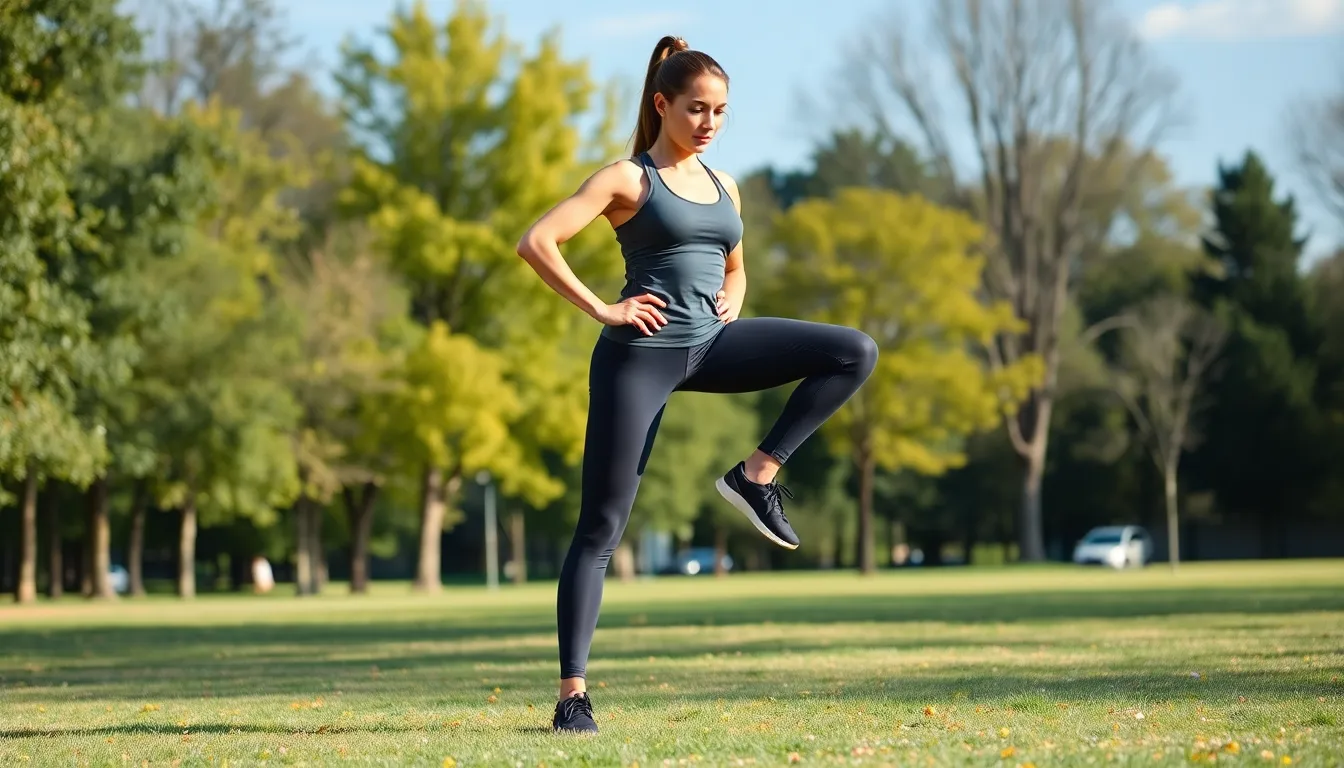Ever feel like your hips are throwing a party without you? If you’ve been struggling with hip stability or just want to dance like nobody’s watching, the hip drop exercise is your ticket to the groove. This simple yet effective move not only strengthens your hip muscles but also helps improve balance and posture—perfect for those who want to strut their stuff confidently. Imagine your hips as the unsung heroes of movement. They support every step you take, whether you’re chasing after a bus or busting a move at a wedding. By incorporating the hip drop exercise into your routine, you’ll unlock a world of mobility and strength. So grab your favorite workout gear and get ready to give those hips the attention they deserve—because who wouldn’t want to rock a solid set of hips?
Hip Drop Exercise
The hip drop exercise enhances hip stability and strength while improving balance and posture. It’s instrumental in everyday movements and supports overall mobility.Benefits of Hip Drop Exercise
Hip drop exercise offers multiple advantages. First, it strengthens the gluteal muscles, which aids in stabilizing the pelvis. Increased hip strength directly improves athletic performance. Improved balance results from engaging core muscles during the exercise. Flexibility benefits those who regularly perform the hip drop, contributing to better movement range. Enhanced posture helps alleviate stress on the spine, reducing discomfort in daily activities. Incorporating this exercise into routines fosters confidence in movement and agility.Common Mistakes to Avoid
Avoid common errors for optimal hip drop performance. First, incorrect positioning of the feet can compromise balance. Ensure the feet remain hip-width apart throughout the exercise. Focusing on form prevents excessive lateral movement of the torso. Not engaging the core diminishes stability, so remember to tighten the abdominal muscles. Additionally, rushing the repetitions may lead to poor execution; practice controlled movements instead. Failing to breathe properly can affect overall performance, so maintain steady breathing during each repetition.How to Perform the Hip Drop Exercise

Step-by-Step Instructions
-
- Stand tall with feet hip-width apart, aligning the body vertically.
-
- Shift weight onto one leg, allowing the opposite hip to drop toward the ground.
-
- Engage the core to stabilize the torso during the movement.
-
- Emphasize a slow, controlled motion when raising the hip back to the starting position.
-
- Alternate sides for balanced training, completing 10-15 repetitions on each leg.
Tips for Proper Form
Ensure alignment by keeping the shoulders level and the hips parallel to the ground. Engage the core throughout the exercise to promote stability. Avoid rushing through repetitions; slow movements enhance muscle engagement. Breathe deeply, exhaling as the hip rises and inhaling during the drop. Finally, allow a slight bend in the supporting knee to maintain balance and reduce strain.Variations of the Hip Drop Exercise
Exploring variations of the hip drop exercise enhances training diversity and addresses various fitness levels.Modified Versions for Beginners
Modified versions facilitate easier engagement for those new to the hip drop exercise. Starting with a wall for support provides stability, which helps maintain balance. Performing the exercise seated can also reduce difficulty and focus on core engagement. Begin in a seated position with feet flat on the ground. Shifting weight gently from side to side allows for gradual adaptation. Utilizing a resistance band around the thighs encourages muscle activation without overwhelming intensity. Completing 5-10 reps on each side supports gradual progression while ensuring safety.Advanced Variations for Increased Difficulty
Advanced variations elevate the challenge, targeting strength and coordination. Adding a single-leg balance component introduces instability and increases core activation. Balancing on one leg while performing a hip drop enhances engagement of stabilizing muscles. Incorporating weights, like dumbbells or kettlebells, amplifies resistance, making the exercise more effective. Attempting the exercise on an unstable surface, such as a balance pad, further complicates the movement. Adjusting the tempo to include slower, controlled descents increases muscle tension. Performing 15-20 reps on each side with these variations boosts overall fitness performance.Incorporating Hip Drop Exercise into Your Routine
Integrating the hip drop exercise into a fitness regimen enhances overall performance. A variety of sample workout plans can make the exercise enjoyable and effective.Sample Workout Plans
-
- Beginner Routine: Include hip drops with modified positions. Perform two sets of 10-12 repetitions on each side.
-
- Intermediate Routine: Combine hip drops with lunges or squats. Execute three sets of 12-15 repetitions on each leg.
-
- Advanced Routine: Challenge stability by incorporating weights or unstable surfaces. Complete four sets of 15-20 repetitions on each side.

- Advanced Routine: Challenge stability by incorporating weights or unstable surfaces. Complete four sets of 15-20 repetitions on each side.
Frequency and Duration Recommendations
Establish a consistent routine to maximize benefits from hip drop exercises. Practicing two to three times per week creates a balanced approach.-
- Session Duration: Use 15-20 minutes per session. Include warm-up and cooldown to prevent injury.
-
- Rest Days: Space workouts for recovery. Allow for at least one rest day between sessions to aid muscle repair.

